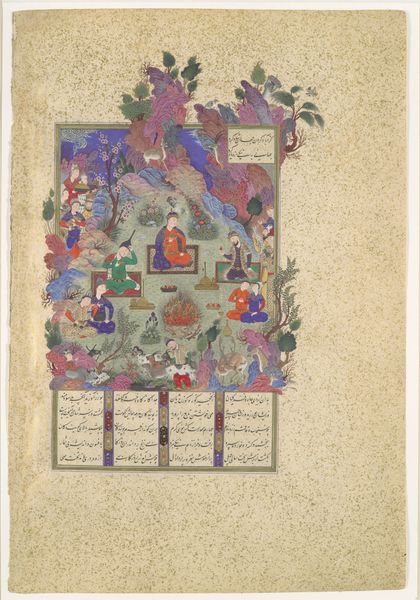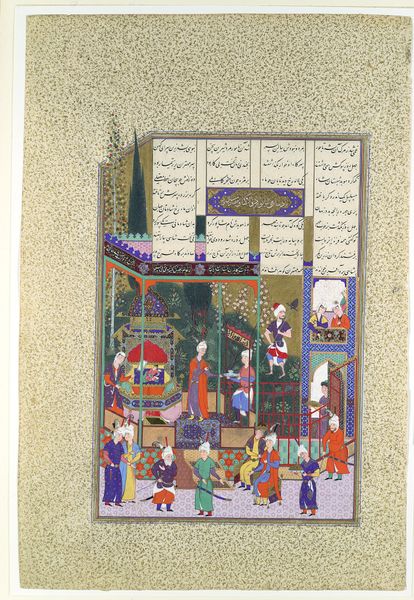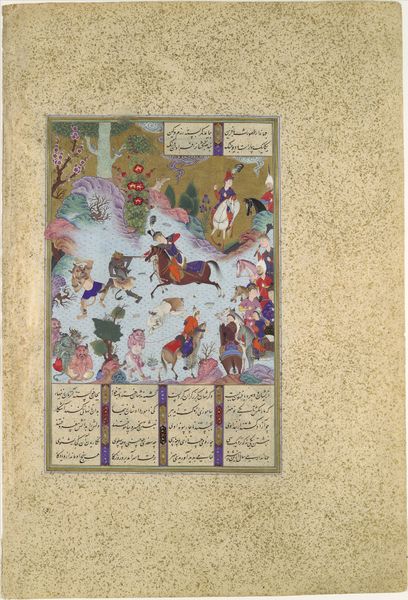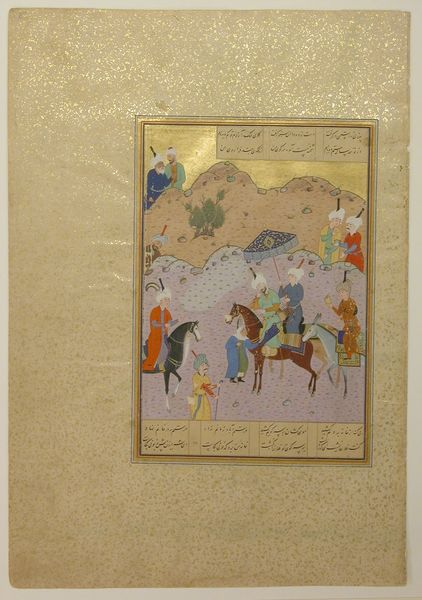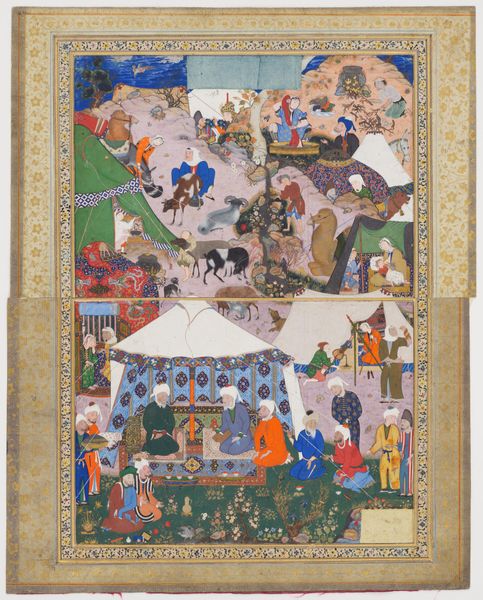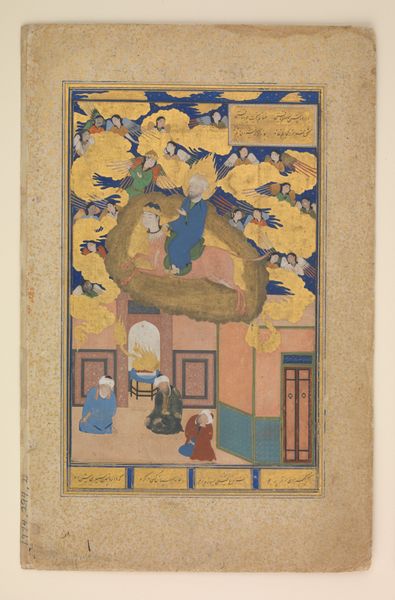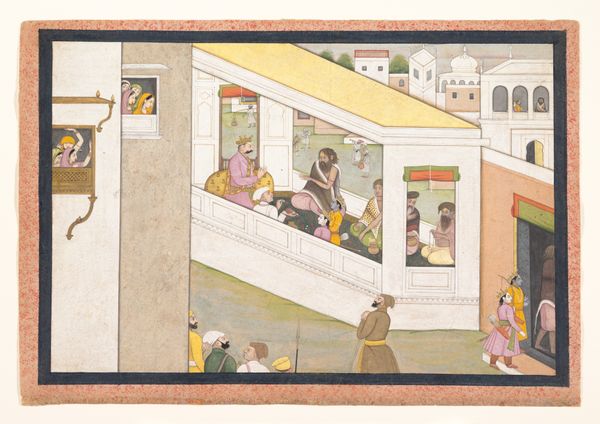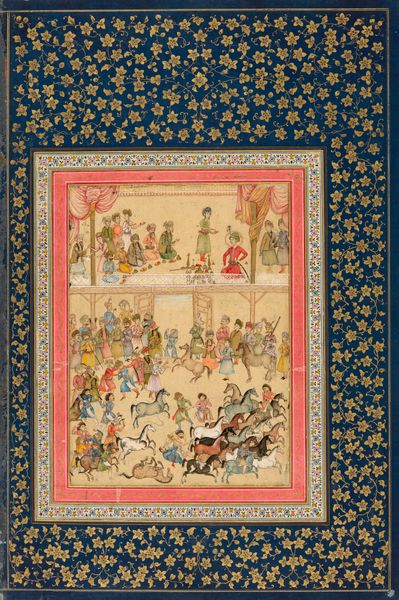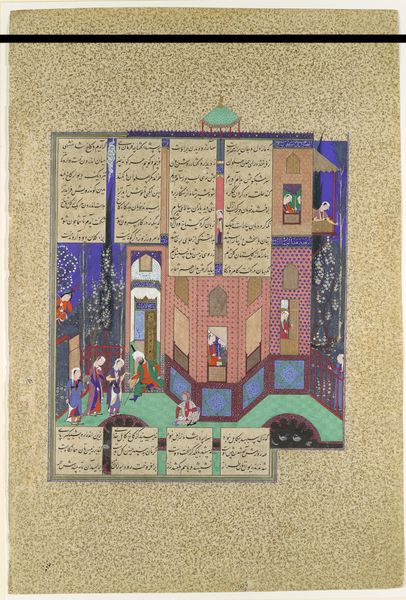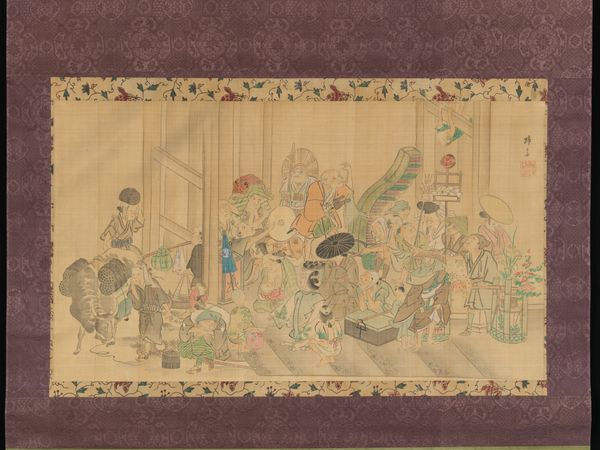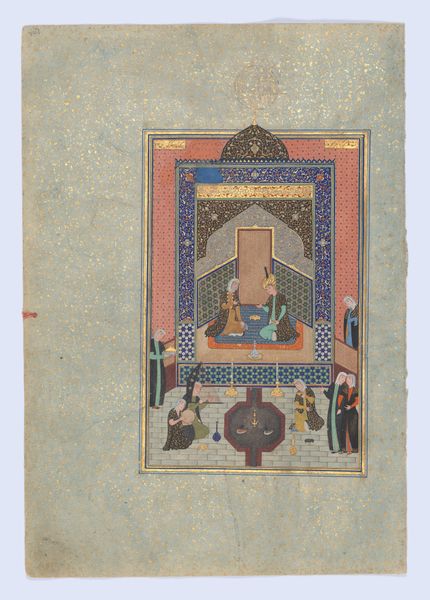
"An Old Man and His Young Wife Before Religious Arbitrators," Folio from a Gulistan of Sa'di 1585 - 1640
0:00
0:00
painting, watercolor
#
portrait
#
water colours
#
narrative-art
#
painting
#
figuration
#
watercolor
#
islamic-art
#
miniature
#
watercolor
Dimensions: Folio: H. 11 1/4 in. (28.6 cm) W. 14 3/16 in. (36.1 cm) Image: H: 3 1/2 in. (8.9 cm) W. 5 1/4 in. (13.3 cm)
Copyright: Public Domain
Curator: The work before us, created sometime between 1585 and 1640, is entitled "An Old Man and His Young Wife Before Religious Arbitrators," a folio from a Gulistan of Sa'di by the artist Daulat. It uses watercolor to bring to life a story from the famous collection of prose and poetry. Editor: The immediate feeling is one of formal constraint, yet also bustling. The colors are muted but precise, drawing my eye towards the fraught central figures and the panel of observers. It is incredibly intricate. Curator: Indeed. Miniatures such as these served not only as illustrations but as cultural artifacts reflecting the moral and social values of the time. The Gulistan itself was often used as a guide for rulers. What's striking here is Daulat’s representation of this particular narrative moment—the dispute between the old man and young wife laid bare before the religious arbitrators. It subtly mirrors the complexities of the socio-political issues facing leaders, advising caution in judgement and fairness. Editor: What intrigues me most are the gestures and positions. The old man's weary posture, the rigid back of the wife, and those gestures the arbitrators use. Are they symbols of their roles in the drama, communicating social power and perhaps hinting at the justice, or injustice, being meted out? Curator: Quite possibly. One of the key features in these works is their creation as teaching aides as much as purely decorative pieces. You'll find symbols being subtly placed, in this instance it is possibly the colors and the characters stance that denotes position. It underscores how stories visually instructed viewers in courtly manners and statecraft. Daulat translates the literal text into complex symbolism. Editor: Considering its function, one starts to interpret this artwork less as an inert piece of the past but as an object deeply embedded within structures of authority, speaking volumes about the values it sought to instill. Curator: A brilliant summation, as it’s placement in society demonstrates just how the arts were a component to building a fairer system of rules and judgment. Editor: Absolutely, and looking at the images brings so much more perspective and thought to modern interpretations.
Comments
No comments
Be the first to comment and join the conversation on the ultimate creative platform.
